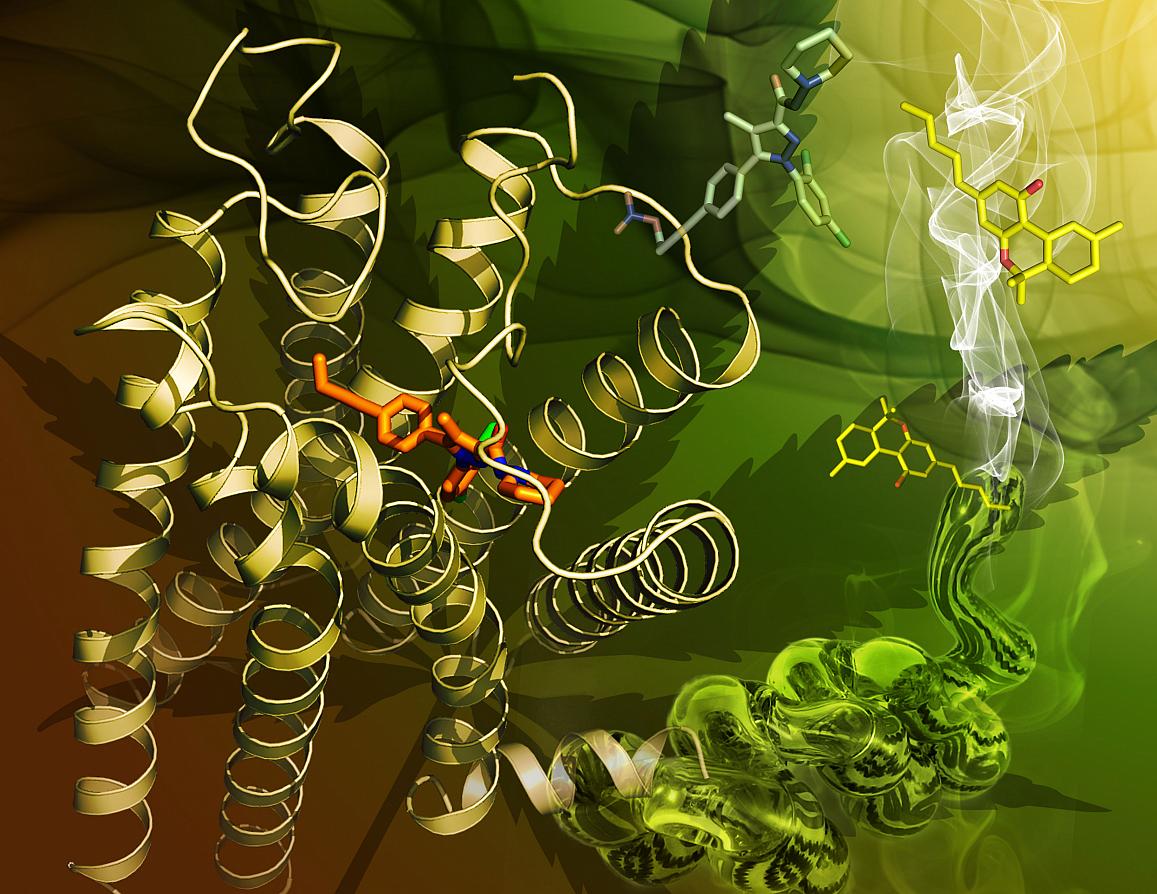The receptor in the brain involved in the "high" people feel after smoking marijuana is revealed in a new, detailed, 3D image today, according to a new study. This provides scientists with their clearest picture yet of this receptor, the study said. The new image shows how molecules such as THC, marijuana's main psychoactive ingredient, bind to this receptor, which is located in the surface of numerous nerve cells, the researchers found. The findings may one day help researchers determine why certain medications designed to mimic the medicinal properties of marijuana without the "high" effect might cause side effects, the researchers said. The new model of the marijuana receptor described in the recent study could also be useful for understanding how certain recreational drugs called synthetic cannabinoids might affect people's health, the researchers said. "We are working hard to understand how the receptor is activated so that we can better understand the effects of synthetic cannabinoids such as K2 and Spice," study co-author Raymond Stevens, also a professor of molecular structural biology and drug discovery at ShanghaiTech University, told Live Science. Though there have not been any documented cases of overdosing on the marijuana plant, there have been cases of severe and even deadly reactions to synthetic cannabinoids, the researchers said. They added that they hope to understand why this is the case, because both of these substances target that same "marijuana receptor." Originally published on Live Science.
Cannabis News Weeducation
High Spot: Brain's Marijuana Center Imaged in 3D
on October 23rd, 2016


